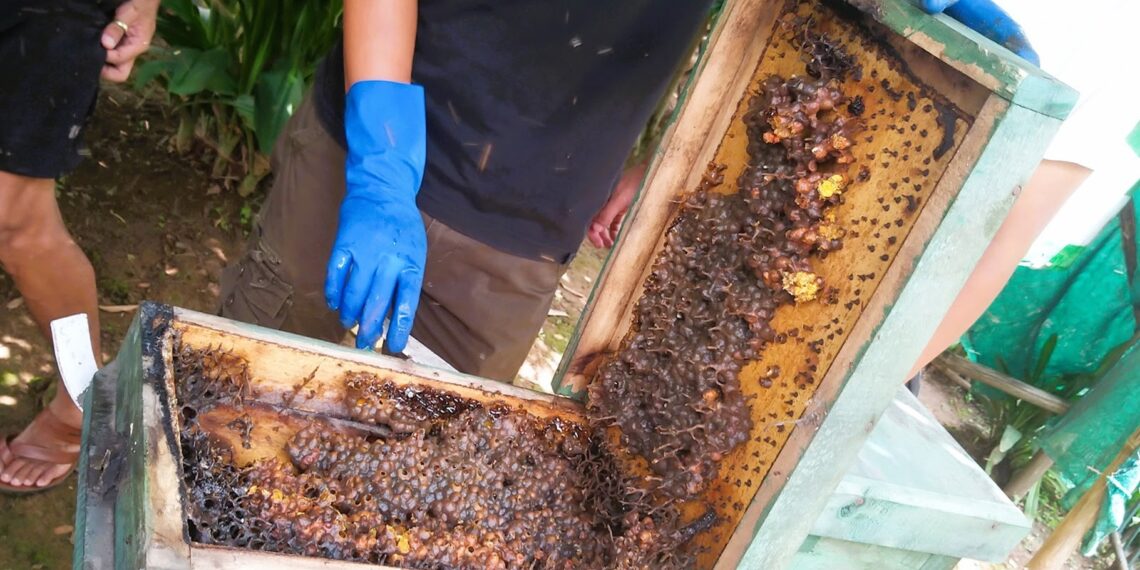Kohima: Researchers from Nagaland University have successfully identified two species of stingless bees—Tetragonula iridipennis (Smith) and Lepidotrigona arcifera (Cockerell)—that show great potential in enhancing crop yields through effective pollination.
By introducing these bees as pollinators in greenhouse environments, significant improvements were observed in both the quantity and quality of agricultural produce.
Unlike honeybees, stingless bees pose no threat of stings, making them safe for use in various crop systems.
In addition to their pollination benefits, these bees are valued for their medicinal honey, which also contributed to farmers’ income during the experiments.
The research team found notable improvements in chilli crops, where bee-pollinated plants outperformed those without pollination. For instance, king chilli experienced a 29.46% fruit set, compared to 21% in non-pollinated plants.
Similarly, in Capsicum annuum (regular chilli), the fruit set increased by 7.42% and the number of healthy fruits rose by 7.92%.
Moreover, seed weight—an indicator of viability and germination—was enhanced by 60.74% through stingless bee pollination.
This pioneering study marks the first systematic evaluation of stingless bees’ pollination capabilities in the region, showcasing their dual benefits of honey production and improved agricultural outcomes. Traditional honeybee pollination has often been inadequate due to behavioral limitations, making stingless bees a promising alternative.
The research, led by Dr. Avinash Chauhan, Scientist and Principal Investigator (AICRP on Honeybees & Pollinators) in the Department of Entomology, School of Agricultural Sciences at Nagaland University, has been published in reputable peer-reviewed journals, including the International Journal of Farm Sciences.
The study focused on using Tetragonula spp. and Lepidotrigona spp. for pollinating crops like cucumber, chilli, king chilli, ash gourd, watermelon, citrus, tomato, pumpkin, brinjal, and dragon fruit.
Stingless bee colonies were scientifically propagated from forest and field extractions to ensure adequate populations for controlled pollination trials.
Their pollination effectiveness was also tested on crops like mango, guava, rhus, gooseberry, and ber.
Stingless bees are found across Northeast, East, and South India, with more recent sightings in North, Central, and Western regions.
While rearing practices in many areas are still developing, traditional homestead apiaries exist in parts of the Northeast and South.
Over the past 7–10 years, Nagaland has made significant strides in scientifically domesticating these bees—developing advanced hives and mass-multiplying colonies using queen cells.
This technology is now being expanded to neighboring states like Meghalaya and Arunachal Pradesh.















